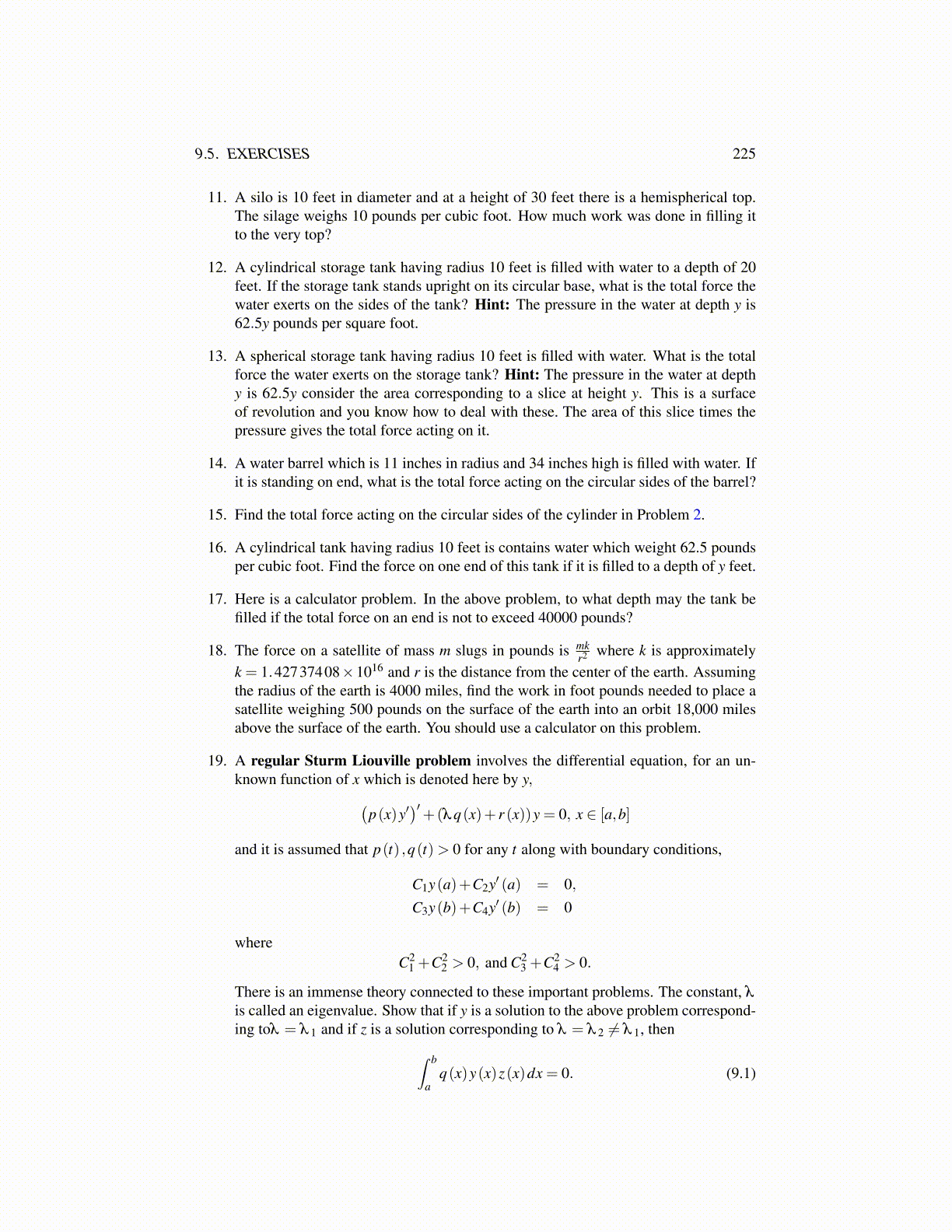
9.5. EXERCISES 225
11. A silo is 10 feet in diameter and at a height of 30 feet there is a hemispherical top.The silage weighs 10 pounds per cubic foot. How much work was done in filling itto the very top?
12. A cylindrical storage tank having radius 10 feet is filled with water to a depth of 20feet. If the storage tank stands upright on its circular base, what is the total force thewater exerts on the sides of the tank? Hint: The pressure in the water at depth y is62.5y pounds per square foot.
13. A spherical storage tank having radius 10 feet is filled with water. What is the totalforce the water exerts on the storage tank? Hint: The pressure in the water at depthy is 62.5y consider the area corresponding to a slice at height y. This is a surfaceof revolution and you know how to deal with these. The area of this slice times thepressure gives the total force acting on it.
14. A water barrel which is 11 inches in radius and 34 inches high is filled with water. Ifit is standing on end, what is the total force acting on the circular sides of the barrel?
15. Find the total force acting on the circular sides of the cylinder in Problem 2.
16. A cylindrical tank having radius 10 feet is contains water which weight 62.5 poundsper cubic foot. Find the force on one end of this tank if it is filled to a depth of y feet.
17. Here is a calculator problem. In the above problem, to what depth may the tank befilled if the total force on an end is not to exceed 40000 pounds?
18. The force on a satellite of mass m slugs in pounds is mkr2 where k is approximately
k = 1.42737408×1016 and r is the distance from the center of the earth. Assumingthe radius of the earth is 4000 miles, find the work in foot pounds needed to place asatellite weighing 500 pounds on the surface of the earth into an orbit 18,000 milesabove the surface of the earth. You should use a calculator on this problem.
19. A regular Sturm Liouville problem involves the differential equation, for an un-known function of x which is denoted here by y,(
p(x)y′)′+(λq(x)+ r (x))y = 0, x ∈ [a,b]
and it is assumed that p(t) ,q(t)> 0 for any t along with boundary conditions,
C1y(a)+C2y′ (a) = 0,C3y(b)+C4y′ (b) = 0
whereC2
1 +C22 > 0, and C2
3 +C24 > 0.
There is an immense theory connected to these important problems. The constant, λ
is called an eigenvalue. Show that if y is a solution to the above problem correspond-ing toλ = λ 1 and if z is a solution corresponding to λ = λ 2 ̸= λ 1, then∫ b
aq(x)y(x)z(x)dx = 0. (9.1)